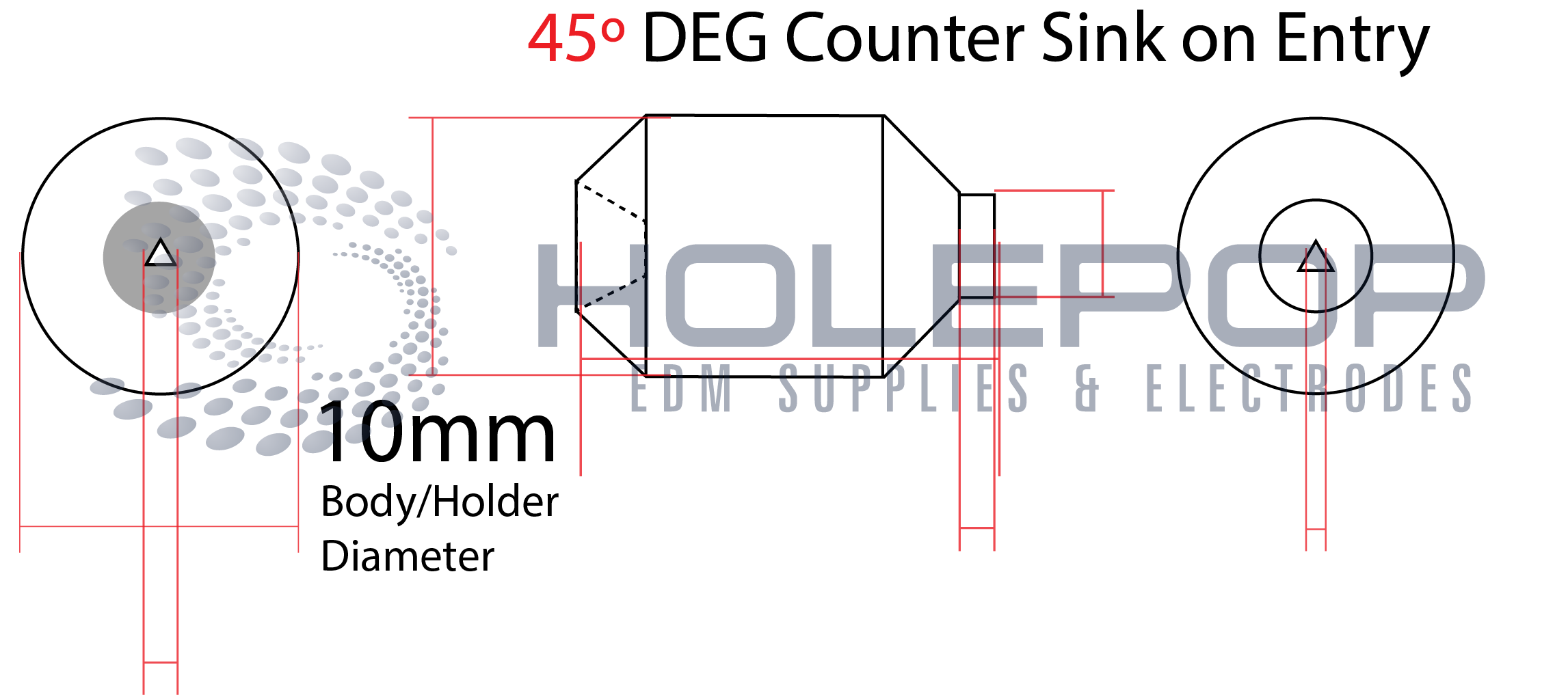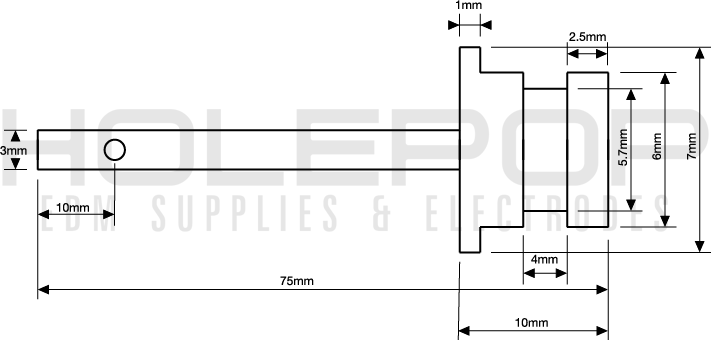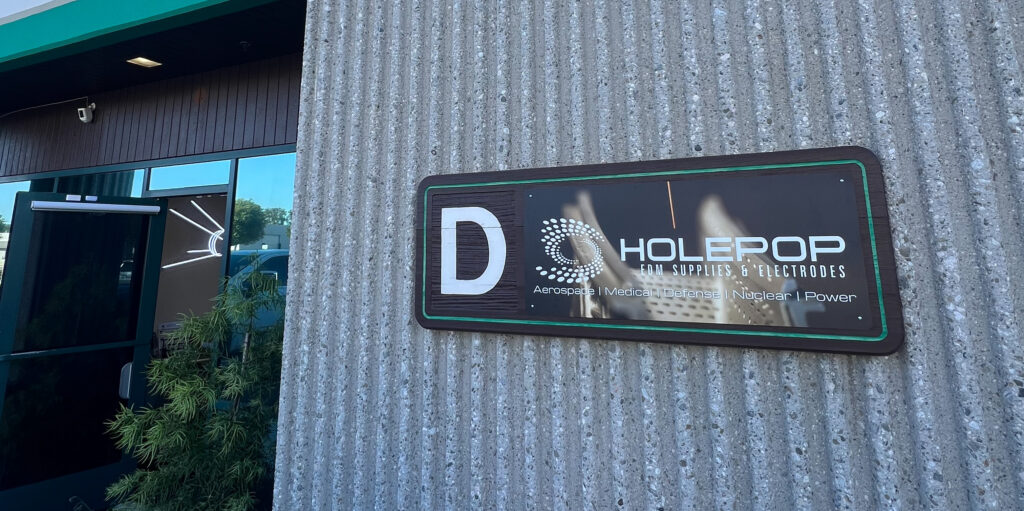Custom EDM Guides
Purpose of an EDM Guide
A guide does just what you might think—it guides an electrode, minimizing variations in position and making for more accurate drilling. Influence a guide may have over its electrode is progressively lost the farther the tip of an electrode is from its guide, however, so a guide should be as close to the hole being drilled as possible. Standard bullet guides can easily accomplish this, as long as the workpiece is being drilled perpendicular to the electrode. Oftentimes, this is not the case. For these jobs, sometimes several modifications need to be made to ensure that the guide controls its electrode to the greatest possible degree, and at Holepop, we understand that the ready availability of fully customizable guides is a must. To this end, we work with you to determine what kind of guide will get you a perfect hole. The following is a list of dimensions that can be modified, and their effect on guide performance.
Guide Modifications and their Advantages
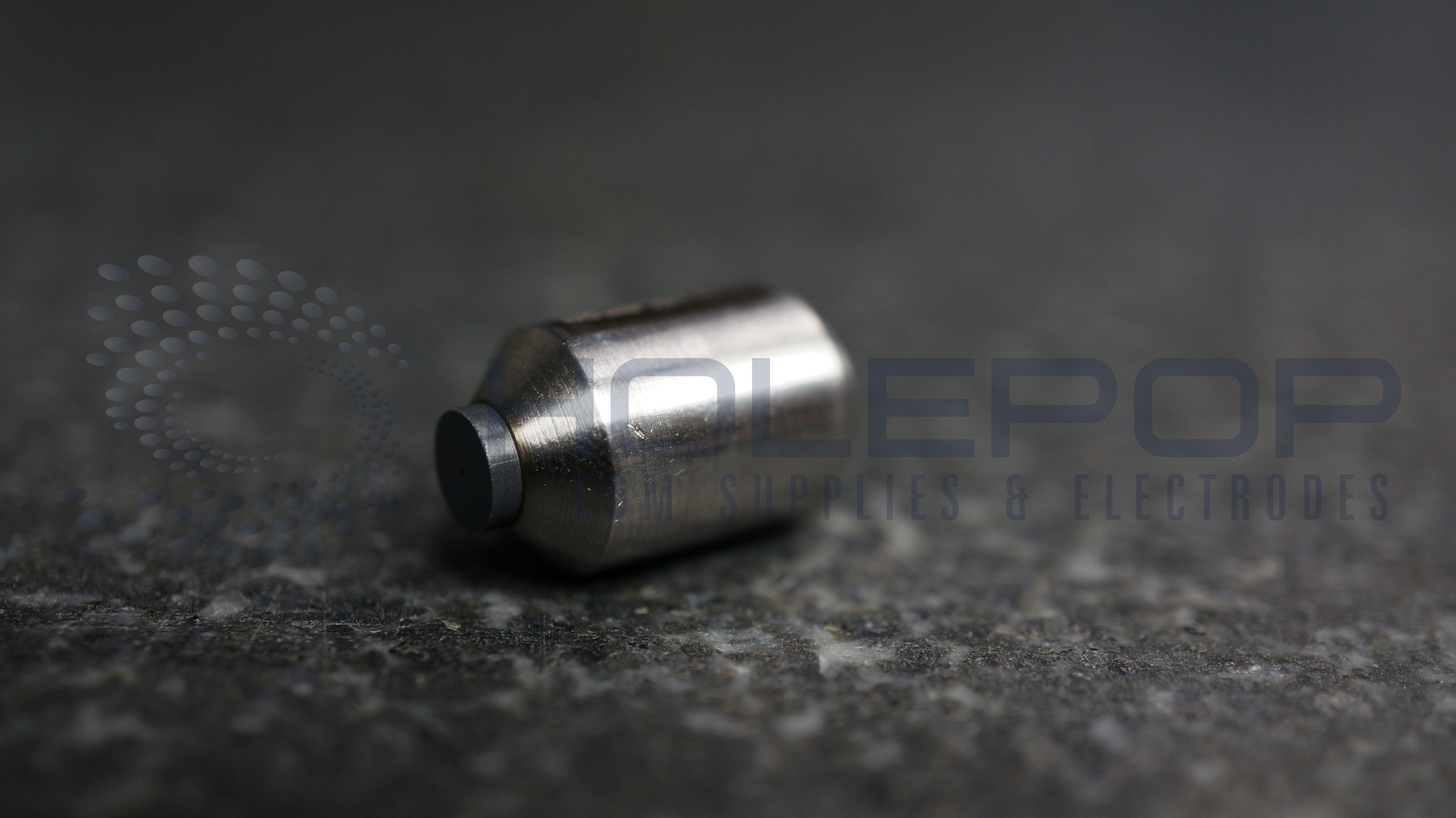

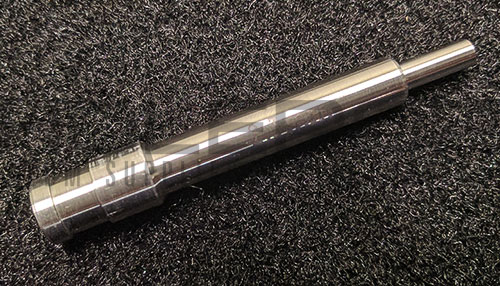

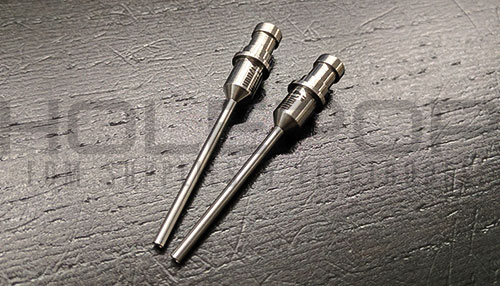

- Internal Diameter—This determines the size of electrode that can go through the guide.
- Guide Clearance—This is just a different way of looking at internal diameter, but with respect to the amount of clearance between the desired electrode’s walls and the guide’s. This is an important factor in electrode and guide performance. Too small of a guide clearance can impede passage of the electrode and needlessly increase friction and wear rate. Too large of a guide clearance negates the straightening influence of a guide.
- Guiding Surface Length—The guiding surface is where guiding happens. Guides are not necessarily filled throughout their entire lengths with ceramic or silicon nitride. The more material is present in a guide, the greater the guiding effect.
- Overall Length—The length of a guide influences the amount of guiding surface contact. A very long guide will make for very stable and accurate drilling. A very long guide will also greatly limit the length of electrode that can actually be burned.
- Tapered Tip—The tip of a guide does not need to be tapered at all. A tapered tip will allow the guide to get as close as possible to the target workpiece that is being drilled at an unusual angle. Tapered tips can be of varied lengths and angles, and can even be of compound angles, giving you lots of drilling flexibility.
- Cut-out Tip—For applications where even a tapered tip is not enough, a portion of the tip can be cut out of the guide. This can compromise the strength of the guide.
- Collar—The width and diameter of the collar can be altered, or the collar can be left out altogether.
- Flange—This can be added to provide greater grip on the guide, promoting stability.
- Hypodermic Extension—This is a narrow extension of the guide tip. This will allow for getting into tight spaces or drilling into a workpiece at a very oblique angle.
